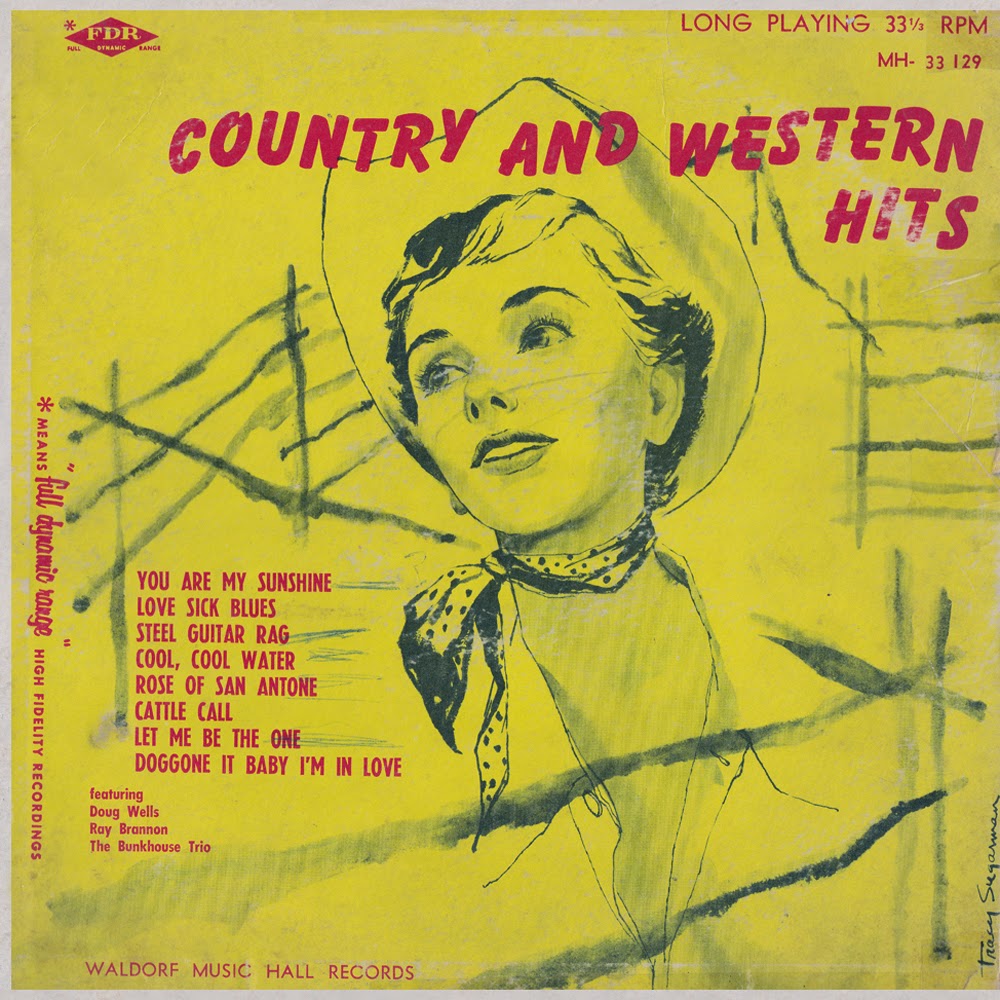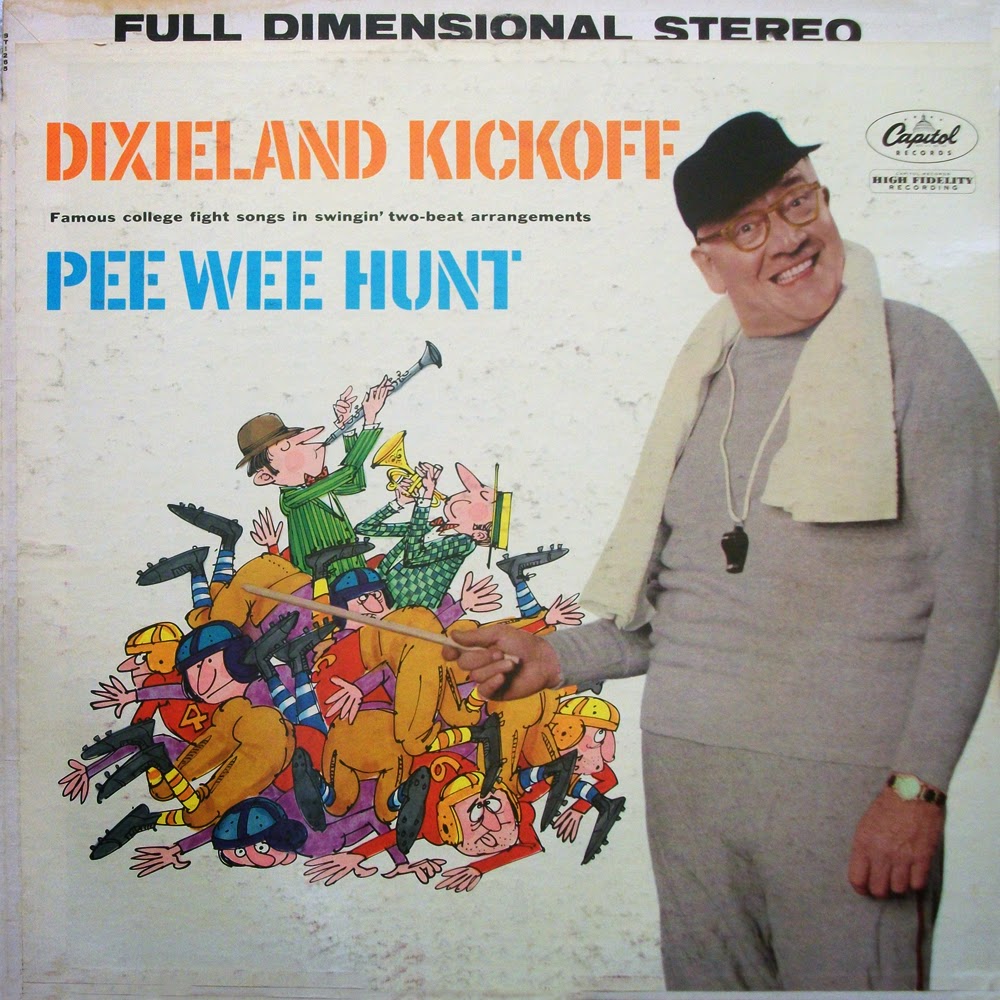Artist: Matty Matlock & His Dixie-Men
Title: Dixieland
Record Label: Mayfair
Catalog Number: 9569S
Format: Yellow Vinyl, LP, Stereo, Album
Country: U.S.A.
Year: 1957
Genre: Dixieland
More Images
TRACKLISTING:
A-Side
A1 [3:51] Jazz Me Blues
A2 [4:02] Blues My Naughty Sweetie Give Me
A3 [3:30] Paper Doll
A4 [5:44] Shimmy Sha Wabble
A5 [4:07] Oh, Didn't He Ramble
B-Side
B1 [4:16] Surgarfoot Strut
B2 [3:45] Tishomingo Blues
B3 [3:01] Ballin' The Jack
B4 [3:18] Ida
B5 [5:31] There'll Be Some Changes Made
Playing Time.........: 00: 40:24
CREDITS:
Bass: Phil Stephens
Clarinet: Matty Matlock
Drums: Nick Fatool
Guitar: Al Hendrickson
Piano: Stan Wrightsman
Tenor Saxophone: Eddie Miller
Trombone: Abe Lincoln
Trumpet: Dick Cathcart
MATRIX NUMBERS:
A side center label: 95695-A
B side center label: 95695-B
A side run-out etched: 9569-S-A RE
B side run-out etched: 9569-S-B
LINER NOTES:
Magnificent New Stereophonic
WEST COAST DIXIE BY THE MATTY MATIOCK JAZZ GROUP
Proving that the best Dixieland jazz music doesn’t emanate exclusively
from Eddie Condon's or Nick's in the Village, clarinetist Matty Matlock
leads a bunch of the boys through some of the most gustful, rousing
two-beat jazz ever waxed. This is WEST COAST DIXIE — and if anyone
itches to start an argument over the comparative merits of East vs.
West, well, this album represents weighty evidence in the case FOR Dixie
Pacifica.
Here are a group of some of the top studio musicians in Hollywood just
doin what comes naturally — blowing jazz in the manner they best
understand and love. Says Matty, "We don't claim it's the purest
Dixieland. We like to call it just jazz". That's what this richness is —
played with all the heart and heat of which these master practitioners
in the art are capable.
Particular attention is directed to the intro to "Oh, Didn't He Ramble"
where, after the marching drums Cathcart blows two quick notes that may
seem in error to some listeners. This is not, of course, a goof but a
cue-in for band to enter with that "back from the graveyard" spirit a la
Dixie In old New Orleans, marks Cathcart, the musicians wore black
aprons en route to the cemetery when they played dirges and blues for
the deceased. On the way home, however, the aprons were reversed to show
gleaming white and the band swung out with happy intent to banish the
gloom of the funeral.
ABOUT THE ARTISTS
MATTY MATIOCK . . . was born in Paducah, Ky. in 1909. Matty first came
into jazz prominence when he replaced Benny Goodman in the Ben Pollack
Orchestra in 1929. When Pollack disbanded, what remained of the ork
organized under Bob Crosby in 1935, with Malty remaining as one of the
key soloists. Settling in Los Angeles in 1943, he has broadcast and
recorded with Crosby, Red Nichols, Jack Teagarden and other Dixieland
groups too numerous to mention. He is currently in the orchestra on the Bob Crosby Show daily over the CBS television network.
EDDIE MILLER . . . is a native of the cradle of jazz, New Orleans, where
he was born in 1911. Eddie, too, is an alumnus of the Ben Pollack
contingent which he joined at 19. He stayed on to become one of the Bob
Crosby Band's top solo men until 1947. Uncle Sam put a lien on his
services in 1943-44. After his discharge, he led his own band in
California and became engaged in studio work. Eddie is another member of
the CBS-TV Bob Crosby Show orchestra.
DICK CATHCART . . . was born into an all musician family in Michigan
City, Ind. After study at Indiana University, he went on his first job
with Ray McKinley's first band, playing jazz and lead trumpet. A stint
with Alvino Rey's group followed before Dick enlisted in the Air Force.
When Bob Crosby revived his band for a short term after the war, Dick
joined the trumpet section and then went on to studio work — was with
MGM for two years. He has since played on many jazz albums. His work on
the "Pete Kelly's Blues" radio show with Jack Webb earned him the
soundtrack cornet chore in the motion picture of the same name. Dick is
another member of the Bob Crosby television show — but he's not in the
band. He sings tenor in the Modernaires vocal group.
ABE LINCOLN . . . who started in music at five, was born in Lancaster,
Pa. in 1907. Abe's first important band job was in New York with the
California Ramblers from 1924 on. He has played in the bands of brother,
Bud Lincoln; Ace Brigode; Roger Wolfe Kahn; Paul Whiteman; Leo Riesman;
and worked the Packard Show. Since 1925, he has been freelancing in
Hollywood, having played on all the major radio and television shows.
Moreover, his trombone has been an important voice in a great many of
the Walter lantz cartoons.
STAN WRICHTSMAN . . . whose piano has been an important factor on most
of the better Dixieland record dates to come from the west coast during
the past 20 years, was born in Oklahoma City in 1910. At 14, he joined
his father's band which worked around Springfield, Mo. He played in
bands all over the south for several years. Stan found his way to
Chicago and worked there with Ben Pollack for a year, then moved to
California in 1936. Some of the jazz groups he has recorded with include
those of Bob Crosby, Artie Shaw and Wingy Manone.
Al HENDRICKSON . . . widely acknowledged as one of the greatest rhythm
guitarists in the business, is a native of Eastland, Tex., born 1920.
Since I925, home base has been California, but the years have been
liberally interspersed with road trips with name bands, such as Artie
Shew, Benny Goodman, Freddy Slack, Boyd Raeburn, Ray Noble, Woody Herman
and others. Celebrated, also, as a singer Al confines himself to
instrumental work in this album.
PHIL STEPHENS . . . was born in Atlanta, Ga., in 1911. Phil was 16 when
he went on the road with Vincent Lopez’ band. In the years ensuing, he
spent 3 1/2 years with Charlie Barnet and an equal period of time with
Tommy Dorsey's great band. Phil then settled in California where he’s
been doing freelance studio work for 14 years. Stars with whom he has
worked include Bing and Bob Crosby, Frank Sinatra, David Rose and many
others. This fine bassist is currently in the orchestra of the Stubby
Kaye television show.
NICK FATOOL . . . has been "Dr. Rhythm" to countless bands and combos
for the past 20 years. A native of Milbury, Mass, born 1915, he was with
the bands of Don Bestor and Joe Heymes; George Hall; graduated to Benny
Goodman's powerhouse band in 1939, joined Artie Shaw in 1940. Nick has
since worked with Claude Thornhill, Jan Savitt, Alvino Rey and Harry
James from the west coast. In recent years, he has been active on motion
picture assignments and in recording.
MAYFAIR RECORDS BRING YOU EXCITING STEREOPHONIC SOUND
TOPS "GOLDEN SOUND" pure gold vinyl stereophonic records are the finest
recordings and the greatest value available in the record world today.
All original TOPS STEREOPHONIC
recordings are recorded on dual track magnetic Ampex tape recorders
operating at fifteen inches per second. The tapes art then carefully
mastered by a Westrex 45 x 45 feedback cutter and heated stylus on a
Scully variable pitch lathe to insure the very finest high quality
reproduction in transferring the ultimate in sound from the tape to the
vinyl. A frequency response is produced of 20 to 20,000 cycles per
second. This system is universally acclaimed by recording engineers as
the best in stereophonic record production.
TOPS has selected pure golden vinyl for its record production as this is
the purest recording material and offers vibrant sound in its truest
form.


+-+Front+-+Orange.jpg)










